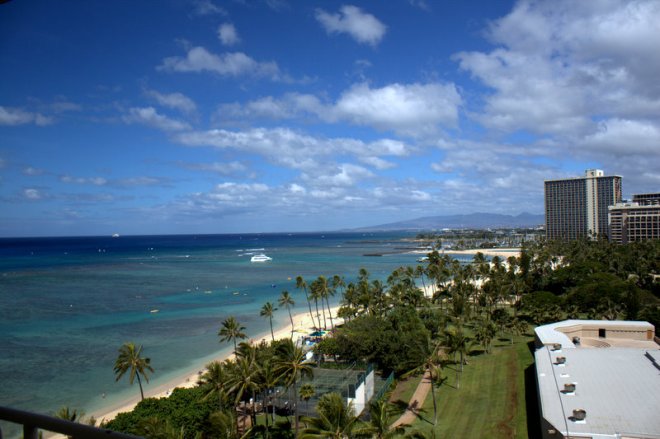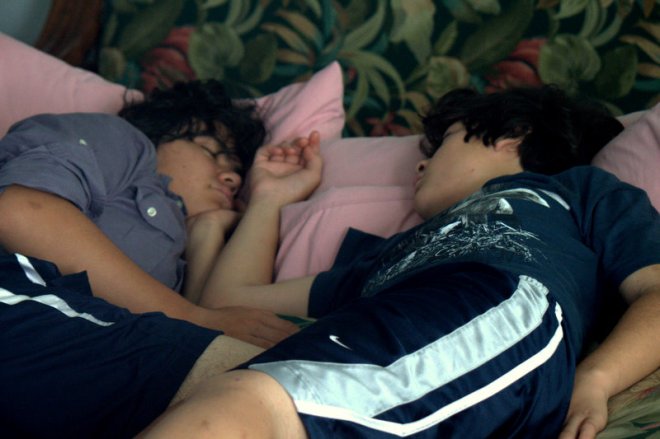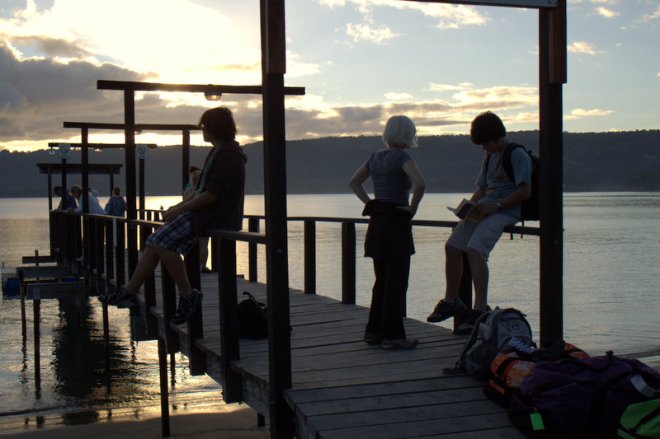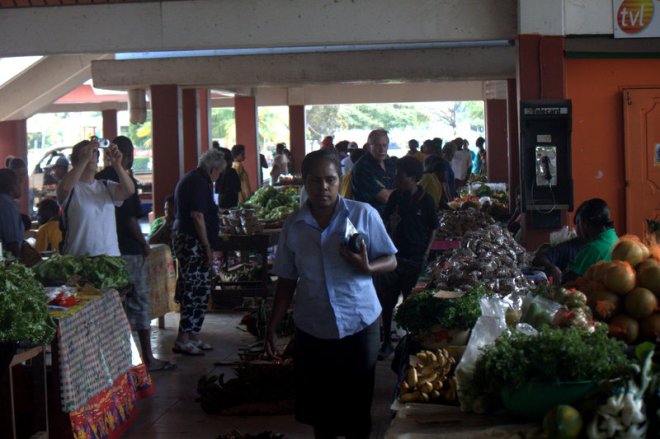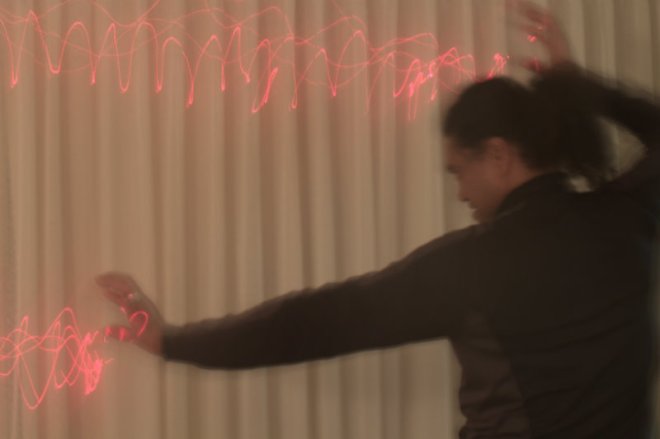The guys from Quikpoint (where Seven works) asked a while back where Seven was and the answer is, yes, he’s been behind the camera. He’s made a great record of our trip so far, though occasionally something happens to the camera that no one seems to understand (could it have something to do with the children’s light experiments?). This has, however, meant that he hasn’t been in front of the camera as much as perhaps one would have liked. So I thought I’d post a picture of him looking stylish in his new hat:

I have to say it’s been great traveling with him in this part of the world. Everywhere we go it’s, “Hey, brother” and “Where you from?” And it’s been really interesting to me to have the experience of looking around (most notably, I think, in the Tongan airport) and seeing him surrounded by a sea of people who look just like him — something that does not happen all that often to anyone, really, if you think about it.
A lot of people even in Tonga thought Seven was Tongan and I could see why. I had, incidentally, expected to see a lot of really huge Tongans — they’re so famous for producing big athletes — but the people didn’t seem any bigger there than anywhere else in Polynesia. In fact, Seven still loomed over most of them. His theory: all the really big guys are over in the States and New Zealand playing football and rugby.
I had originally tried to plan our itinerary so that we could follow (more or less) the original Polynesian migration route from west to east, or, failing that, retrace it backwards from east to west. But it turns out that modern air travel routes make that impossible. You can’t fly from Tahiti to Tonga, for example, or from Tonga to Hawai’i. Or maybe you can, but not easily enough to work it into this trip. So we’ve done a certain amount of backtracking. (Dani figured out the other day how many different flights we’ve been on: 8 just getting us in and out and around French Polynesia!).
Tonga was another of these places that is served by a limited number of airlines operating out of a limited number of hubs, so when we left there we had to go back to New Zealand in order to go on to Australia. This meant that we had a one-night layover in Auckland, where, incredibly, still more of Seven’s relatives managed to find us — we weren’t even in the country for 24 hours! This time it was some of his nephews who were all just kids last time we saw them — kids, I should add, that I was particularly fond of, so it was nice to see how they’d turned out. Here’s a farewell shot of us in Auckland.

From here it was on to Australia, where there were still more people to see. I lived in Australia for almost 15 years; Seven was there for about 11. I spent my formative years there as a graduate student; Seven and I were married there; Abraham grew up there until the age of 7 (and had an Australian accent when he arrived in the States); Matiu was born there…Suffice it to say, it was a big part of our life.
We haven’t been back since leaving in 1998 and I had given us, what, 5 days? I knew, heading into it, that it was impossible. But I hadn’t really understood how impossible it was, nor had I understood what the effect of all that visiting in New Zealand, or perhaps just all this travel, would be on the children, who were in a mutinous mood for much of the time.
Two things helped: babies and animals. Our first order of business was a visit to Auntie Mere’s house to see her and her two babies. Mere is the sister who came to live with us in Queensland and moved with us to Melbourne, where she still lives. This was all before Dani’s time and Matiu was too young to remember, though of course she remembers him. Mere has since had two sons, including this little dynamo, who is named after his uncle Tauwhitu, aka Seven:
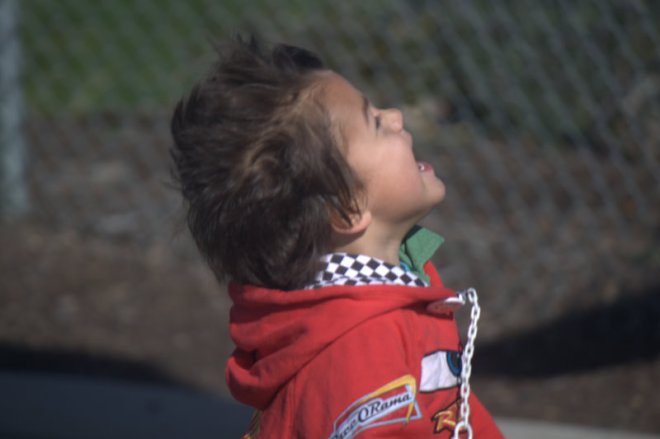
It took the combined efforts of Big Seven, Matiu, and Dani to keep Little Seven occupied when they came to visit us in the flat we were renting in Melbourne, which was of course not child-proofed. Little Seven is only 2, but can he move! Like lightning, that boy! Reminded me of that escape artist Dani, who was once returned to us by a neighbor when he was just about this age. He had gone out of the house, up the driveway, and down the road before anyone even realized he was missing. My prediction for this child is that he’s going to be a wicked athlete: you should have seen him catch and kick a ball. Lucky, too, because they’re going to need ways to keep him busy. As a wise dog trainer I once knew used to say: “A tired dog is a good dog.” Speaking as the mother of three boys, I would have to say the same is true of energetic toddlers.
The other very successful thing we did in Australia with our boys was to visit the Healesville Sanctuary. It was a beautiful day, with a rapidly changing sky (sun, then clouds, then sun, but no rain) and a stunning landscape of hills and bush and little towns. They’ve had a lot of rain this winter in Melbourne and the countryside was vividly green, which it isn’t often. I had forgotten how gorgeous it all was, and, on the subject of dogs (and babies, ha ha), I had also forgotten how very beautiful this animal was.

We’d been seeing these mangy-looking dogs all over Polynesia (along with chickens and pigs), so it was a surprise to see how lovely a wild dog looked. This, is, of course, a dingo. In fact, I had forgotten how spectacular all of Australia’s creatures are. Here are a few shots from the Sanctuary. I think you will have no trouble identifying this first one:

One of Australia’s many scary snakes:

One of my favorite birds — the galah — common but spectacular:

A flying fox (aka fruit bat):

A monitor, aka goanna. This thing is bigger than it looks in the picture, maybe four feet long, perhaps a bit more, from tip to tip:

A koala — unfailingly adorable:

And the ubiquitous pelican, another great-looking bird:

Ah, Australia. Such a cool place and we had time for such a tiny little taste of it….







